Playgrounds for All Children: A Guide to Lighting and Designing Play Areas for Kids With Special Needs
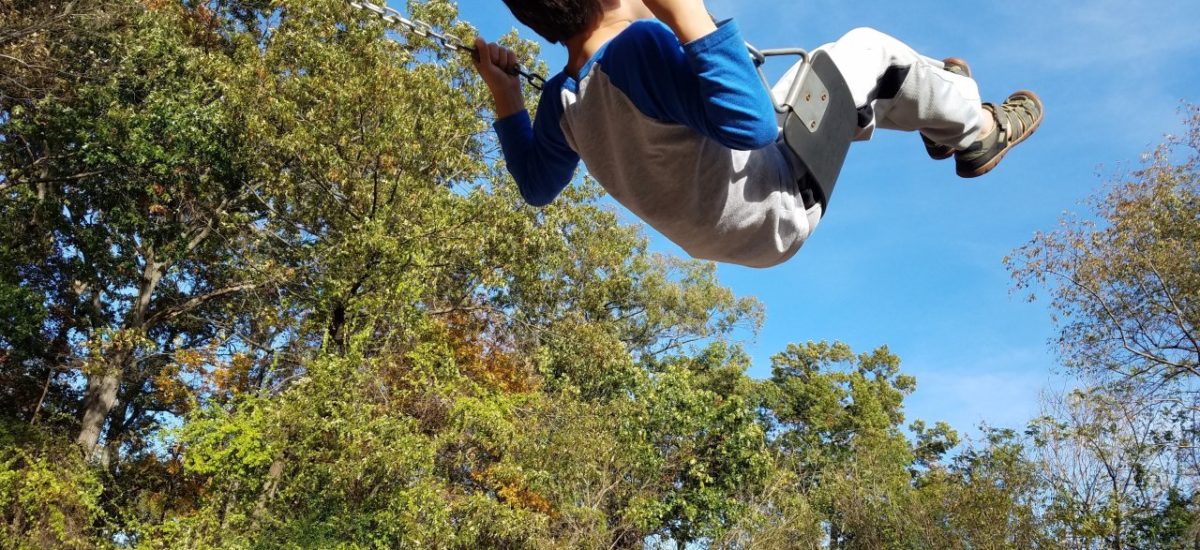
Playgrounds are great areas for children to learn social skills and cues, get exercise, and develop their understanding of the world. An ideal playground is a safe, well illuminated place where children can gather and recreate. In order to truly be an inclusive play area, the design needs to account for all children. This includes children with neurological disabilities, intellectual disabilities, mobility difficulties, physical disabilities, and children with social or emotional disabilities.
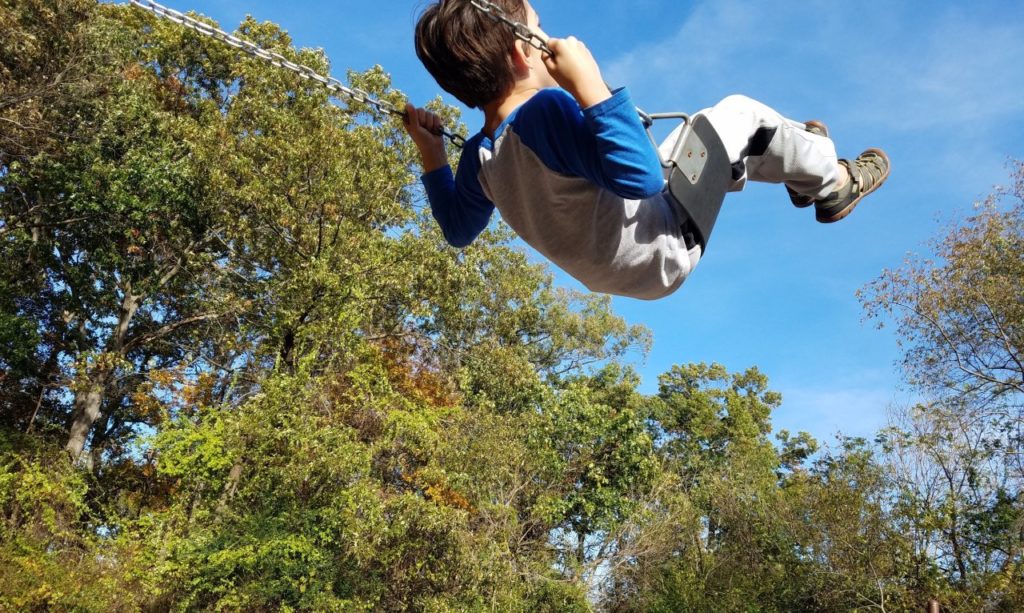
What Is an Inclusive Playground?
An inclusive playground is a play area that is designed to be a universally accessible, sensory-rich environment. It should allow children to play, while appropriately stimulating the senses and facilitating their development—both physically and socially. When someone creates an inclusive play area, they need to follow national and local minimum accessibility requirements. A truly inclusive playground goes above and beyond to create a comprehensive, all-encompassing area for all children to play.
Accessibility and Safety Considerations
When you are in the planning phase of creating an inclusive play area, there are certain factors to keep in mind. The Americans with Disabilities Act (ADA) standards for public accommodations and commercial facilities outlines the various standards and features for abiding by accessibility laws. While these legal standards are only enforceable in public areas outside the home, you should consider including similar building parameters when creating a play area for your child with special needs in your home.
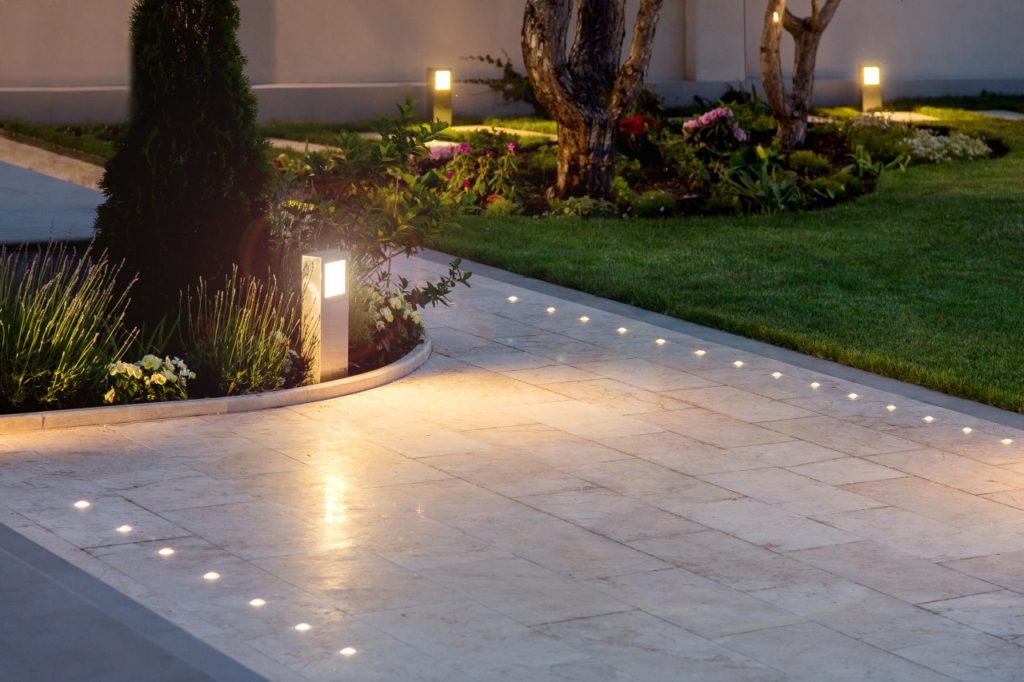
Designing an Accessible Space: Ramps and Lighting
Designing an accessible space should include all aspects of an area, from ramps to ADA compliant lighting. The ADA Accessibility Guidelines (ADAAG) mandates the following minimum requirements:
- At least one accessible route (a route that can be accessed viably by individuals with mobility difficulties — e.g. those who are paralyzed, blind, etc.) shall be provided within the boundary of the site from public transportation stops, accessible parking spaces, passenger loading zones if provided, and public streets or sidewalks, to an accessible building entrance
- At least one accessible route shall connect accessible buildings, accessible facilities, accessible elements, and accessible spaces that are on the same site
- (Court Sports) An accessible route shall directly connect both sides of the court in court sports
- All objects that protrude from surfaces of posts into circulation paths shall not protrude more than 4 inches into walks, halls, corridors, passageways, or aisles
- If parking spaces are provided for self-parking by employees or visitors, or both, then accessible spaces shall be provided in each such parking area in conformance with the ADA parking spaces guide
- If toilet facilities are provided on a site, then each such public or common use toilet facility shall have an accessible route, and doors will not swing into the route or floor place. Mirrors, urinals, lavatories, controls, and dispensers should all be accessible heights. Accessible units shall be identified by the International Symbol of Accessibility
Visual Aids and Signs
Visual aids and objects of reference to enhance communication are crucial for creating an inclusive play area. Children who have severe learning difficulties, special needs, or any other disability can benefit greatly from their implementation. This should consider signs with both words and pictures, braille instructions, and possibly audio aids. The ADA mandates the following visual aids and signage requirement for the following situations:
- Parking spaces designated as reserved for individuals with disabilities;
- Accessible passenger loading zones
- Accessible entrances when not all are accessible (inaccessible entrances shall have directional signage to indicate the route to the nearest accessible entrance)
- Accessible toilet and bathing facilities when not all are accessible
The list above outlines the bare minimum requirements for creating an inclusive area, but you are not limited to this. Instructions for play equipment or other features in the play area should be considered as well to help create a more comprehensive design. If there is something that may cause confusion, or prove difficult for a child with special needs, you should aim to provide visual aids or some form of signage.
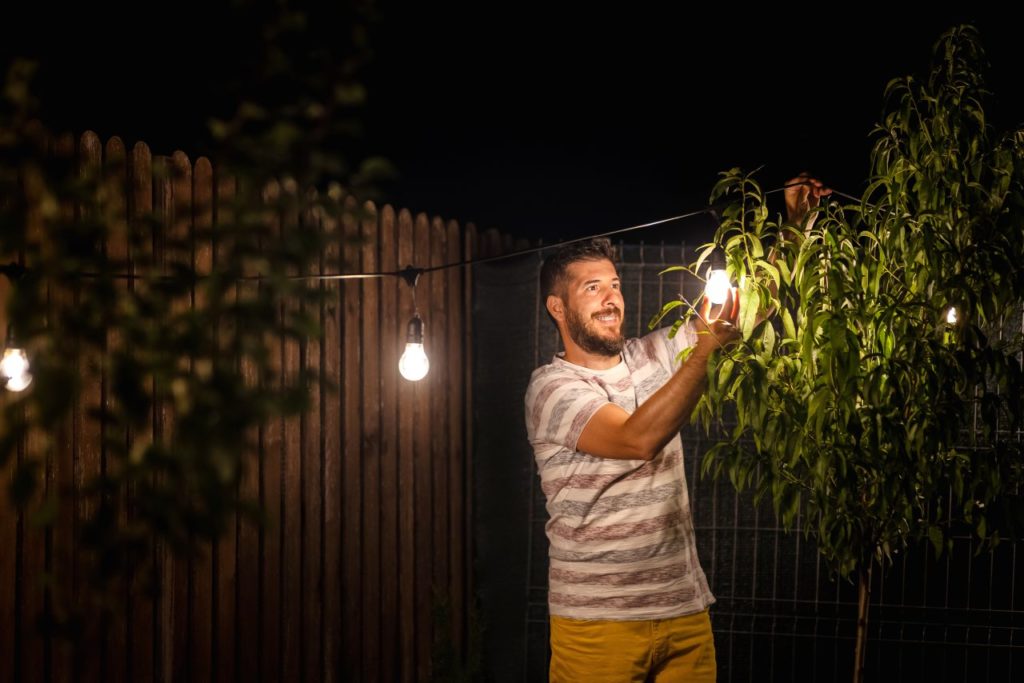
Creating Outdoor Play Areas for Children With Special Needs
When you are planning and creating an outdoor play area, there are certain things that you should consider for a viable build. You want to be sure that you are choosing accessible equipment, a proper location, and are aware of various hazards to avoid.
Choosing Equipment
When you choose equipment, it should be primarily concerned with safety and accessibility. The playground should comply with the ADA regulations listed above, but it should also be noted that choosing inclusive equipment goes beyond just slides and swings — it also includes:
- Lighting: you want to be sure that there is proper outdoor lighting for the play area. How to choose the right outdoor lighting depends on the times that the area is available for play, and how much landscape lighting you will need
- Flooring: gravel, mulch, and sand are not great options for inclusive play. You want to look into options for concrete, or preferably rubber safe playground flooring/tiling
- Walkways: wherever you put playground equipment, you need viable walkways and access leading up to the feature. You will want to ensure that they are at least 36 inches wide (per ADA walkways specifications). Make sure that ramps or stairs to higher levels follow ADA ramp requirements surrounding slope, width, landings, and handrails
- Signage: make sure to allocate money towards proper signage. Whatever playground equipment or feature you include should have signage included
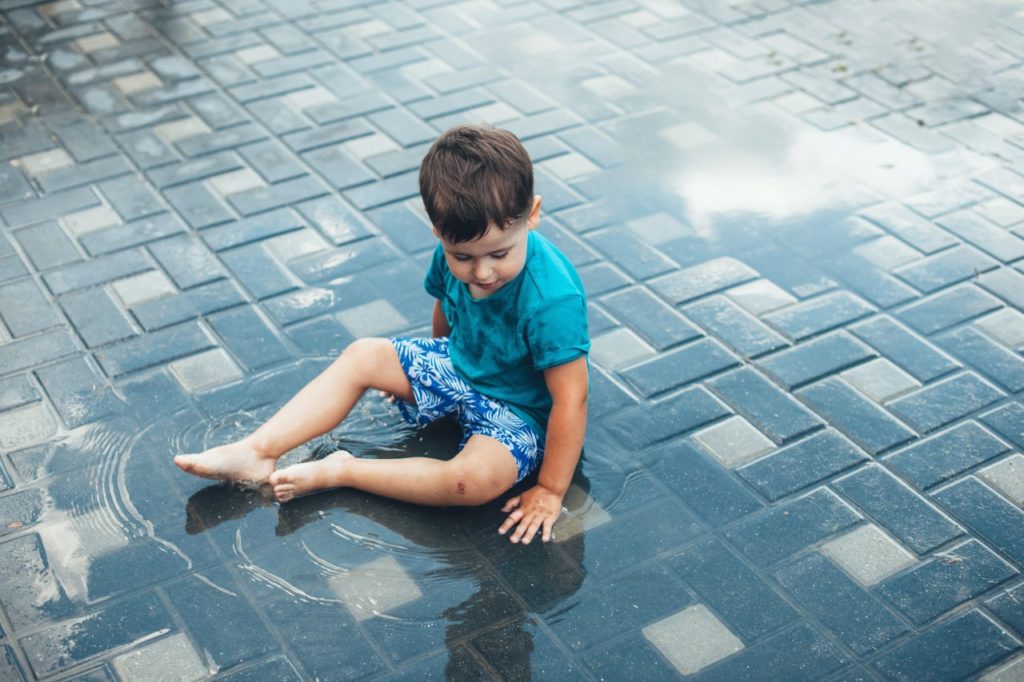
Choosing an Outdoor Location
Creating an inclusive outdoor play area should consider location first and foremost. The first step for choosing the location of your playground is to research where you would prefer to build. Reach out to the landowner, or have a representative reach out, to plan a time to stop by and to look in person and talk about the details of the land.
You will want to assess the land and note any immediate potential red flags like large hills, or uneven topography. You will want to evaluate how well the location will serve children by considering how close it is to schools and how populated the surrounding area is with children. One of the primary considerations should be accessibility. You want to ensure ample room for parking, bathroom facilities, drinking fountains, shaded areas, and large walkways.
What to Avoid
Young children, as well as children who struggle with emotional regulation, self-injury, or executive function, may be at more risk in certain areas of the outdoors. There are some things that you should aim to avoid when creating an outdoor inclusive play area — these include:
- Loud, busy locations
- Locations near constant traffic
- Small locations
- Uneven ground (hills, gravel, mulch, sand, etc.)
- Shiny or reflective surfaces
- Avoid blue, red, green colors adjacent to one another
- Metal slides
- Overcrowded equipment
The Importance of Play in Early Childhood
The benefits of play go beyond just the physical activity, or the promise of an early bedtime. A study on the importance of inclusive playgrounds explains, “Play is important for the social, emotional, intellectual, and physical development of all children.” According to Sage Publication, the value of inclusive play includes:
- A deeper understanding of the world and the similarities and differences between individuals
- Creating an understanding of things like tolerance, acceptance, appreciating different views and perspectives
- Creating a rich environment of diversity through different languages and methods of communication
- Creating an understanding of identity and a positive sense of self/self-esteem
- Reinforcing curricular goals like social and emotional development, language development, and an understanding of the world as a whole
This remains true for children with special needs. The Episcopal Center for Children explains that children with special needs benefit from outdoor play in the following ways:
- Improves coordination and motor skills: children with special needs may have slight developmental delays, and playing outside can help improve the following flexibility, muscle strength, as well as coordination
- Helps build self-esteem: by developing friendships, and playing alongside other children, all kids can build an improved sense of belongings and self-esteem
- Improves social skills and overall behavior in public spheres: not only are children at play developing friendships, but children are also getting direct insight into social cues, and how views differentiate from person to person. This can help kids learn that there are certain things that you can do at home, and those things may differ from what you can do in public
- Helps create autonomy: when children play, it creates newfound autonomy. When a child is playing they can forget that an adult is even there, meanwhile, they’re learning and making decisions on their own
- Improves health: play promotes healthy child development cognitively, socially, physically, and emotionally
- Improves attention span: play is similar to a reset button. It gives kids the ability to put their excess energy into that increases focus afterward
- Creates problem-solving skills: when children play — either alone, or with other children — they can learn to overcome certain things like sharing toys, or learning to wait for your turn
- Lowers stress: children with special needs may get overwhelmed or stressed, and playing is a great way to decompress and help alleviate those feelings
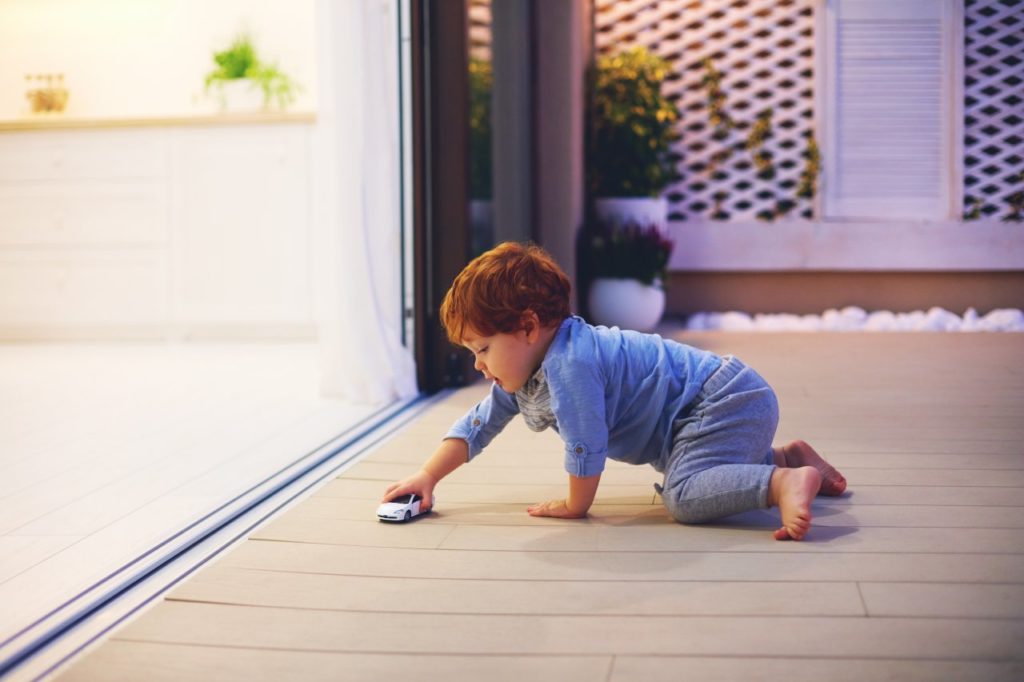
Creating Indoor Play Areas for Children With Special Needs
When you are creating or improving an indoor play area for children with special needs, there are some things that you should consider prior to building, purchasing materials, or hiring help.
Choosing an Indoor Location
Whether you are creating an indoor inclusive play area in your home, or an alternative location outside of your home, there are certain things to consider. For example, combining a bedroom and a play area is not always the best idea. You should aim to have a separate area for play to ensure the bedroom is strictly for sleeping. The area should be a secluded, quiet room, but also one that is easy to access — such as a room on the first floor. Rooms that are near the hustle and bustle of the house (e.g. kitchen, living room) are rooms that you should stay away from when choosing your location.
Choosing Equipment and Decor
When you design an indoor play area, it is important to consider the play equipment and decor. This should include items that encourage sensory play, toys or activities that encourage movement, proper lighting (both overhead ceiling lighting and wall lighting), soft flooring, and all of the different features should be physically accessible.
Even though this area may be private, it should still provide proper signage or play instructions — at least during the beginning phases of getting acclimated to the new area.
What to Avoid
Young children, as well as children who struggle with emotional regulation, self-injury, or executive function, may be at more risk in certain areas of the home, or with certain features, so it is important to be aware of what to avoid:
- Loud areas (e.g. kitchen, living room, common areas, etc.)
- Hard flooring (e.g. laminate, hardwood, concrete, etc.)
- Disorganization
- Poor lighting
- Excessively bright or flashy decor (e.g. paint, art, etc.)
- Accessible outlets or powerstrips
Activities that Promote Inclusive Sensory Play
Sensory play is any type of play that involves the senses. Much like the inclusive play benefit section above, sensory play helps improve and develop:
- Motor skills
- Play skills
- Language development
- Using the 5 senses (touch, sight, sounds, taste, smell)
- Calming/coping mechanisms
When you combine sensory play with inclusive play areas, you create an opportunity to stimulate the senses of children while creating a comprehensive inviting safe space for kids to be kids in the process. The lists below are not exhaustive, and are designed to give examples of activities that promote inclusive sensory play among children.
Movement-Based Activities
Movement and exercise help children in a variety of ways. They help with motor skills, social skills, communication skills, and they can help with academic performance and focus. Some examples of movement-based activities include:
- Ball pit
- Bubbles
- Hide-and-go seek
- Hopscotch
- Hula hoop contest
- Jump rope
- Obstacle course
- Redlight, greenlight
- Simon says
- Swinging
- Tag
- Yoga/stretching
Natural World Activities
In a world of technology and digital learning options, it is important to be aware of the ways that nature can help children learn. Learning through natural world activities can help restore focus, relieve stress, develop self-discipline, increases physical fitness, promote social connection, and enhances creativity. Below are several natural world activities to help promote inclusive, sensory play:
- Bird watching/feeding
- Bug hunting
- Cloud gazing
- Gardening
- Nature walks/hikes
- Picnics
- Pressing flowers
- Rock art/painting
- Scavenger hunt
- Sensory garden
- Water activities
Miscellaneous Activities
It is important to note that sensory activities can be very simple ventures. The point is to stimulate the senses in some way, shape, or form. The following miscellaneous activities don’t necessarily fit under one of the categories above, but they promote inclusive sensory play:
- Drawing
- Painting
- Sensory bins
- Sidewalk chalk
- Tic-tac-toe
Additional Resources
There is an array of resources available for helping you create an inclusive play area for children with special needs. There are organizations dedicated to providing funding and that specialize in inclusive playground equipment you should be aware of.
- AccessiblePlaygrounds.net: the mission behind accessibleplaygrounds.net is to help families find a place where their children will be able to play, and to provide readers with all of the information necessary to develop their own accessible playground
- International Playground Equipment Manufacturers Association: IPEMA’s philosophy is to represent and serve manufacturers of the playground equipment industry, to provide members with in-depth information on issues, or news in the industry, and to promote relationships within the industry to strengthen the marketplace
- KaBoom: KaBoom offers a playground toolkit that helps individuals organize and consider all the different factors in creating an inclusive community play area. It covers resources, sampling soil, fundraising, green building, accessibility, and even offers different activities for children
- KorKat: KorKat assists individuals through the entire process of budgeting/funding, planning, implementation, and installation
- Neighborly: Neighborly helps connect communities with funding sources, service providers, and they keep areas informed with community projects going on
- Playworld: Playworld provides playground equipment, but they also help during the planning process surrounding research. Playworld also helps with fundraising, crowdsourcing, and grant funding
- SofSURFACES: SofSURFACES is a surfacing manufacturer, but they also have a variety of blog posts designed to provide information on the parameters of surfacing
More Outdoor Ideas and Advice
A Guide to Dark Sky Lighting – 6 Quick Tips
